Tongue diagnosis, also known as wang she (observing the tongue), is an important method for understanding the physiological functions and pathological changes of the body through the observation of tongue patterns, used for diagnosing and understanding diseases.During tongue diagnosis, observations are made in the order of tip – middle – root – sides of the tongue. First, observe the tongue body, then the tongue coating, for about 30 seconds. If the diagnosis is unclear after one observation, allow the patient to rest for 3-5 minutes before re-examining.Below are some clinically common tongue coating color charts that I have carefully compiled, hoping to be helpful to everyone.
Tongue Shape and Surface
1. Red spots on the tongue – Internal heat accumulation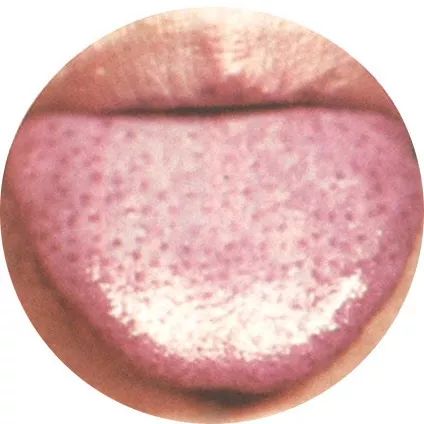 If there are red spots or prickles on the tongue, it indicates excessive internal heat.
If there are red spots or prickles on the tongue, it indicates excessive internal heat. Red spots and prickles on the tip, middle, and sides of the tongue represent excessive heart fire, gastrointestinal heat, and liver-gallbladder fire, respectively. 2. Cracked tongue – Deficiency of essence and blood
Red spots and prickles on the tip, middle, and sides of the tongue represent excessive heart fire, gastrointestinal heat, and liver-gallbladder fire, respectively. 2. Cracked tongue – Deficiency of essence and blood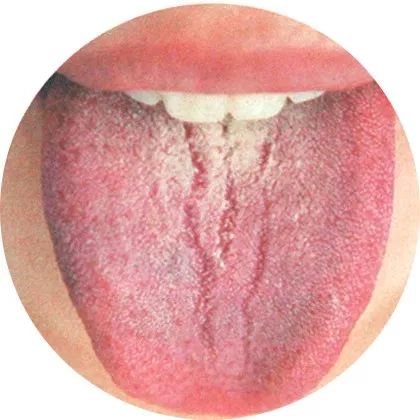 Cracks on the tongue are generally not covered by tongue coating, indicating deficiency of essence and blood.
Cracks on the tongue are generally not covered by tongue coating, indicating deficiency of essence and blood. A white tongue coating with cracks indicates deficiency of essence and blood; a crimson and dry tongue with cracks indicates heat damaging body fluids. 3. Tongue with teeth marks – Yang deficiency
A white tongue coating with cracks indicates deficiency of essence and blood; a crimson and dry tongue with cracks indicates heat damaging body fluids. 3. Tongue with teeth marks – Yang deficiency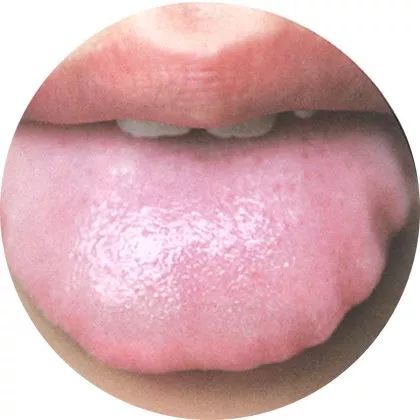 A pale tongue body with a pale coating indicates deficiency of spleen and kidney yang, with internal dampness and phlegm accumulation.
A pale tongue body with a pale coating indicates deficiency of spleen and kidney yang, with internal dampness and phlegm accumulation. This tongue pattern is very soft, indicating deficiency of yang energy and decline in physical strength. 4. Pale tongue – Internal deficiency of sweat
This tongue pattern is very soft, indicating deficiency of yang energy and decline in physical strength. 4. Pale tongue – Internal deficiency of sweat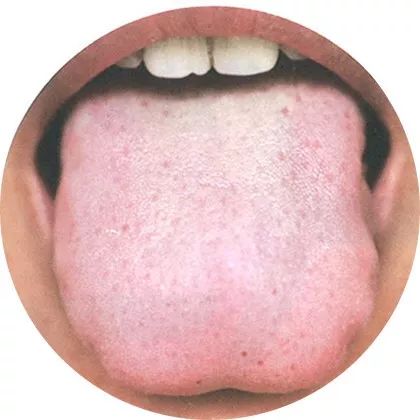 A pale and plump tongue is caused by deficiency of yang energy; a pale and thin tongue is caused by deficiency of qi and blood.
A pale and plump tongue is caused by deficiency of yang energy; a pale and thin tongue is caused by deficiency of qi and blood. A pale tongue indicates a deficiency syndrome or a cold syndrome. 5. Red tongue – Presence of pathogenic heat
A pale tongue indicates a deficiency syndrome or a cold syndrome. 5. Red tongue – Presence of pathogenic heat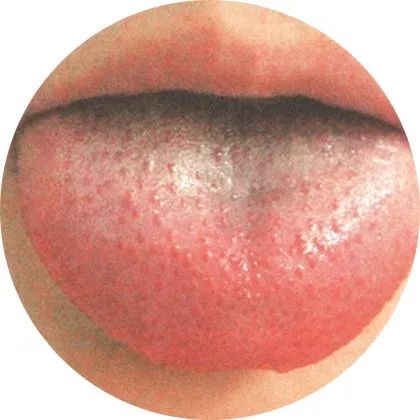 A red tip with prickles indicates heart fire rising; a tongue that is red with a yellow and dry coating indicates internal excess heat; a red tongue body with little or no coating indicates yin deficiency with internal heat.
A red tip with prickles indicates heart fire rising; a tongue that is red with a yellow and dry coating indicates internal excess heat; a red tongue body with little or no coating indicates yin deficiency with internal heat. This indicates a heat syndrome, which may be due to excessive accumulation of heat in the body, while also observing if there are red spots on the tongue surface. 6. Crimson tongue – Severe pathogenic heat
This indicates a heat syndrome, which may be due to excessive accumulation of heat in the body, while also observing if there are red spots on the tongue surface. 6. Crimson tongue – Severe pathogenic heat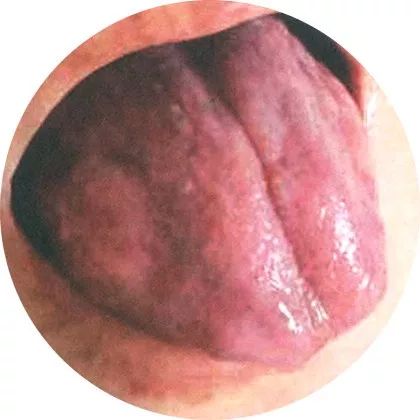 A crimson tongue with a dry body and prickles or cracks indicates intense internal heat; a crimson tongue with no coating and smooth surface indicates exhaustion of stomach and kidney yin.
A crimson tongue with a dry body and prickles or cracks indicates intense internal heat; a crimson tongue with no coating and smooth surface indicates exhaustion of stomach and kidney yin. This tongue pattern indicates that the heat pathogen has deeply penetrated the blood and nutrients, usually resulting in the depletion of body fluids, with deeper colors indicating more severe heat and symptoms. 7. Purple tongue – Poor blood circulation
This tongue pattern indicates that the heat pathogen has deeply penetrated the blood and nutrients, usually resulting in the depletion of body fluids, with deeper colors indicating more severe heat and symptoms. 7. Purple tongue – Poor blood circulation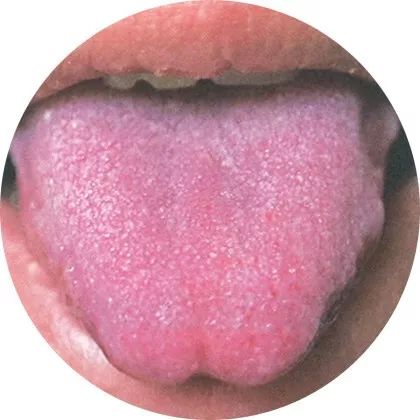 A bluish-purple tongue indicates poor blood circulation. A purple tongue with a reddish hue may indicate excessive internal heat accumulation.
A bluish-purple tongue indicates poor blood circulation. A purple tongue with a reddish hue may indicate excessive internal heat accumulation. Cold syndrome, heat syndrome, or blood stasis syndrome may also present with this tongue pattern, primarily caused by poor blood flow.
Cold syndrome, heat syndrome, or blood stasis syndrome may also present with this tongue pattern, primarily caused by poor blood flow.
Tongue Size
1. Enlarged tongue – Internal cold deficiency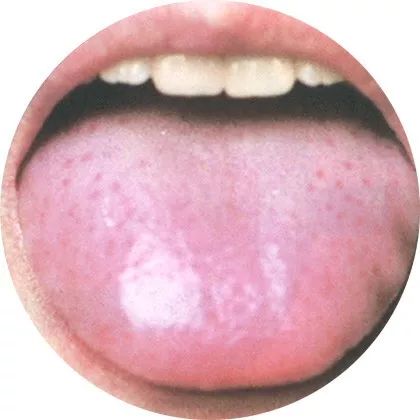 Pay attention to the color of the tongue, the coating, and whether there are red spots on the surface.
Pay attention to the color of the tongue, the coating, and whether there are red spots on the surface. A yellowish tongue coating often indicates excessive heart and spleen heat; a swollen tongue with a dark purple color often indicates blood stasis obstructing the meridians. 2. Fat pale tongue – Weak yang energy
A yellowish tongue coating often indicates excessive heart and spleen heat; a swollen tongue with a dark purple color often indicates blood stasis obstructing the meridians. 2. Fat pale tongue – Weak yang energy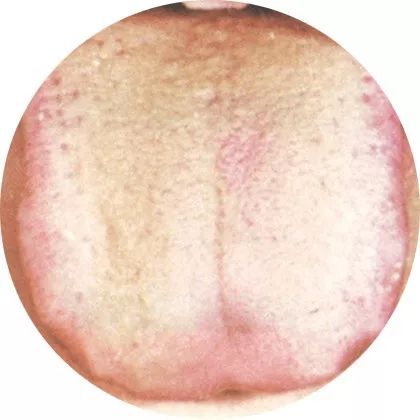 Due to weak yang energy, the warming and promoting functions are affected, leading to a decrease in the distribution of fluids, resulting in a plump and pale tongue.
Due to weak yang energy, the warming and promoting functions are affected, leading to a decrease in the distribution of fluids, resulting in a plump and pale tongue. A fat pale tongue indicates weak yang energy and retention of water and dampness. 3. Thin red tongue – Nutritional deficiency
A fat pale tongue indicates weak yang energy and retention of water and dampness. 3. Thin red tongue – Nutritional deficiency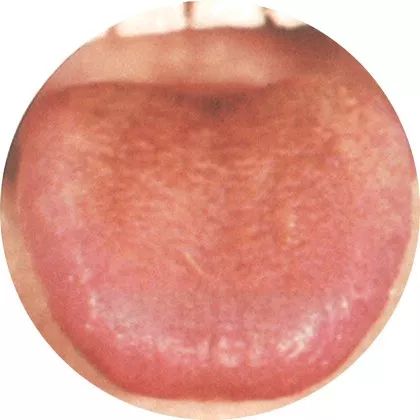 A reddish tongue indicates internal heat or inflammation, with prolonged heat damaging body fluids, leading to depletion of nutrients.
A reddish tongue indicates internal heat or inflammation, with prolonged heat damaging body fluids, leading to depletion of nutrients. A thin tongue indicates a lack of nutrition and moisture. 4. Thin pale tongue – Deficiency of both qi and blood
A thin tongue indicates a lack of nutrition and moisture. 4. Thin pale tongue – Deficiency of both qi and blood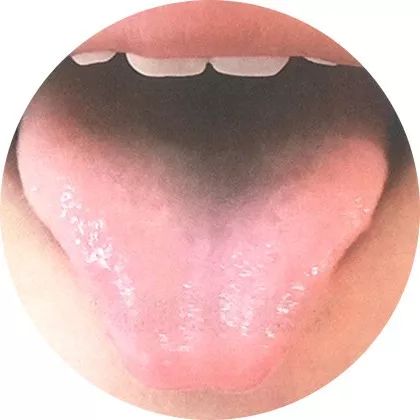 A thin pale tongue with obvious coating often accompanies mild colds or digestive issues, indicating a weak constitution.
A thin pale tongue with obvious coating often accompanies mild colds or digestive issues, indicating a weak constitution. This primarily reflects a pathological state of deficiency of both qi and blood, indicating malnutrition. 5. Old tongue – Confrontation of righteous and evil
This primarily reflects a pathological state of deficiency of both qi and blood, indicating malnutrition. 5. Old tongue – Confrontation of righteous and evil A tongue with yellowish-white or gray-black coating often indicates a predominance of excess syndrome or heat syndrome.
A tongue with yellowish-white or gray-black coating often indicates a predominance of excess syndrome or heat syndrome. An old tongue is commonly seen in the stage of confrontation between righteous and evil, where the pathogenic qi is fierce, but the body’s resistance is also strong. 6. Tender tongue – Low metabolic function
An old tongue is commonly seen in the stage of confrontation between righteous and evil, where the pathogenic qi is fierce, but the body’s resistance is also strong. 6. Tender tongue – Low metabolic function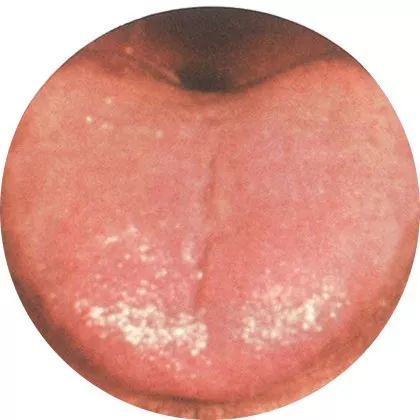 Often indicates deficiency syndrome, cold syndrome, or damp syndrome.
Often indicates deficiency syndrome, cold syndrome, or damp syndrome. This tongue pattern is often seen in sub-healthy individuals with weakened organ function, low nutritional metabolism, or weakened resistance.
This tongue pattern is often seen in sub-healthy individuals with weakened organ function, low nutritional metabolism, or weakened resistance.
Tongue Coating Thickness
1. Thin coating – Mild condition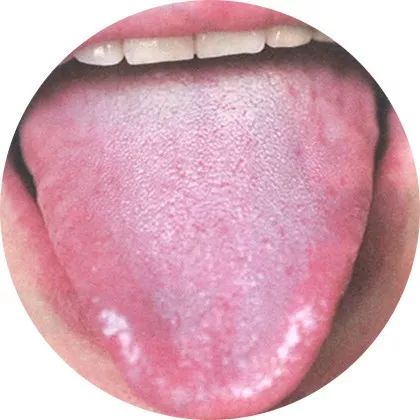 A thin white coating and a pale tongue are normal tongue patterns; a thin yellow coating mainly reflects the pathological characteristics of an initial heat syndrome.
A thin white coating and a pale tongue are normal tongue patterns; a thin yellow coating mainly reflects the pathological characteristics of an initial heat syndrome. This indicates a normal tongue coating or an initial stage of disease, or shows a mild condition. 2. Thick coating – Gastrointestinal accumulation
This indicates a normal tongue coating or an initial stage of disease, or shows a mild condition. 2. Thick coating – Gastrointestinal accumulation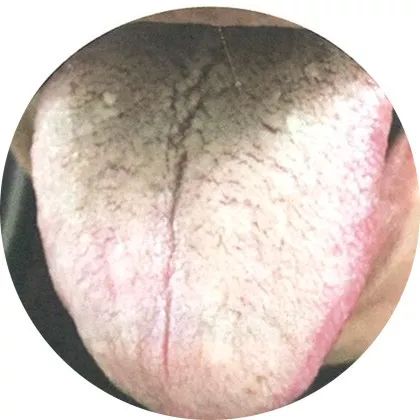 If the tongue is red, with a yellow, thick, and dry coating, it indicates excessive heat damaging yin; if it is pale red with a thick, white, greasy coating, it indicates phlegm, dampness, or food stagnation.
If the tongue is red, with a yellow, thick, and dry coating, it indicates excessive heat damaging yin; if it is pale red with a thick, white, greasy coating, it indicates phlegm, dampness, or food stagnation. This indicates a transition from a mild condition to a more severe one, or the presence of gastrointestinal accumulation. 3. Dry coating – Damage to body fluids from vomiting and diarrhea
This indicates a transition from a mild condition to a more severe one, or the presence of gastrointestinal accumulation. 3. Dry coating – Damage to body fluids from vomiting and diarrhea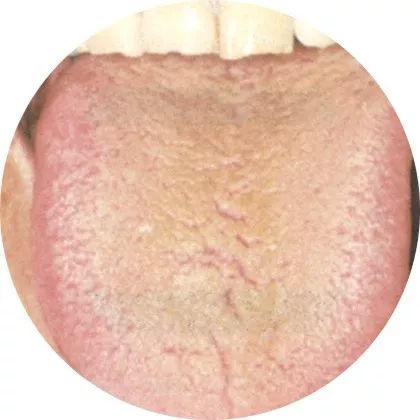 If the tongue coating is only dry and white, it indicates poor circulation of body fluids; if the tongue coating is dry and yellow, it indicates excessive stomach heat damaging body fluids; if the tongue coating is dry and black, it indicates extreme heat damaging yin.
If the tongue coating is only dry and white, it indicates poor circulation of body fluids; if the tongue coating is dry and yellow, it indicates excessive stomach heat damaging body fluids; if the tongue coating is dry and black, it indicates extreme heat damaging yin. Generally indicates high fever and damage to body fluids from vomiting and diarrhea. It is also important to check the color of the tongue itself. 4. Rough coating – Deficiency of body fluids
Generally indicates high fever and damage to body fluids from vomiting and diarrhea. It is also important to check the color of the tongue itself. 4. Rough coating – Deficiency of body fluids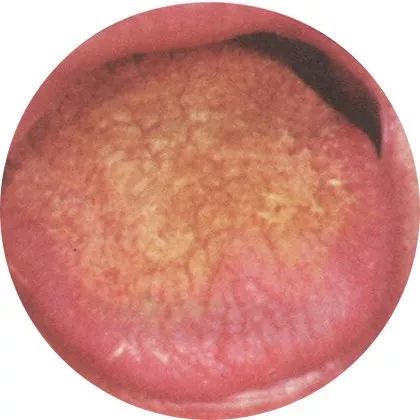 If the dryness in the body becomes severe, it raises concerns about chronic diseases such as hyperlipidemia and diabetes; individuals with asthma may experience difficulty breathing.
If the dryness in the body becomes severe, it raises concerns about chronic diseases such as hyperlipidemia and diabetes; individuals with asthma may experience difficulty breathing. Rough coating indicates severe deficiency of body fluids. 5. Slippery coating – Lack of energy
Rough coating indicates severe deficiency of body fluids. 5. Slippery coating – Lack of energy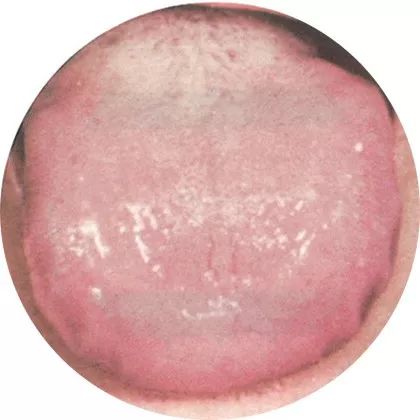 If the body is easily fatigued, lacks energy, and feels weak, it indicates a state of reduced functions and lowered immunity.
If the body is easily fatigued, lacks energy, and feels weak, it indicates a state of reduced functions and lowered immunity. This indicates a deficiency syndrome or cold syndrome. It is also important to pay attention to the size of the tongue and the teeth marks on the edges. 6. Greasy coating – Dampness and turbidity accumulation
This indicates a deficiency syndrome or cold syndrome. It is also important to pay attention to the size of the tongue and the teeth marks on the edges. 6. Greasy coating – Dampness and turbidity accumulation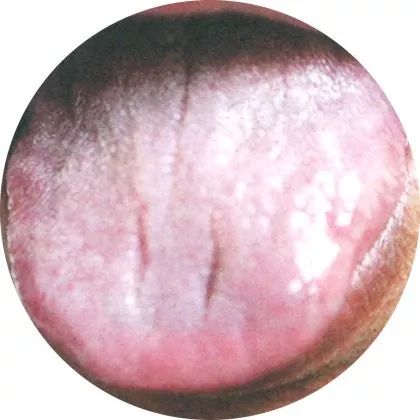 A white coating that adheres to the surface of the tongue indicates internal cold and dampness; if the coating is yellow, it indicates internal dampness or phlegm turbidity accumulation.
A white coating that adheres to the surface of the tongue indicates internal cold and dampness; if the coating is yellow, it indicates internal dampness or phlegm turbidity accumulation. This indicates dampness and turbidity accumulation, with yang energy being restrained, primarily indicating phlegm dampness and food accumulation. 7. Decayed coating – Excessive internal heat
This indicates dampness and turbidity accumulation, with yang energy being restrained, primarily indicating phlegm dampness and food accumulation. 7. Decayed coating – Excessive internal heat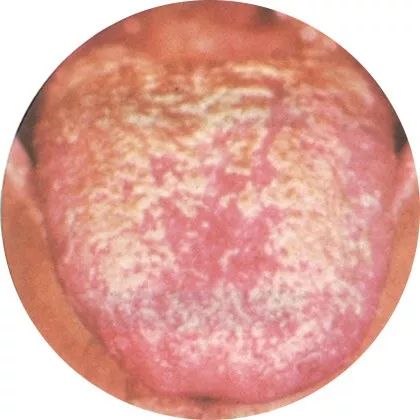 Be cautious of discomfort and infections caused by overeating.
Be cautious of discomfort and infections caused by overeating. Decayed coating is often associated with heat syndrome, primarily indicating food accumulation and phlegm dampness.
Decayed coating is often associated with heat syndrome, primarily indicating food accumulation and phlegm dampness.
Tongue Coating Color
1. White coating – Dampness and phlegm accumulation A thin white coating is a normal tongue coating or indicates the initial stage of a superficial syndrome. A thin white and slippery coating indicates internal cold syndrome or damp syndrome.
A thin white coating is a normal tongue coating or indicates the initial stage of a superficial syndrome. A thin white and slippery coating indicates internal cold syndrome or damp syndrome. Based on the moisture level and thickness of the tongue coating, it can be classified into thin white coating, white slippery coating, white dry coating, and white powdery coating. 2. Yellow coating – Transformation of cold into heat
Based on the moisture level and thickness of the tongue coating, it can be classified into thin white coating, white slippery coating, white dry coating, and white powdery coating. 2. Yellow coating – Transformation of cold into heat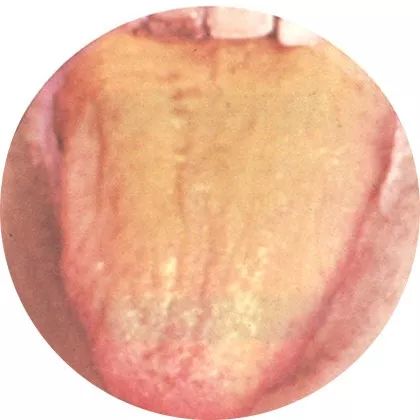 A thin yellow coating indicates mild heat; a yellow coating indicates severe heat; a scorched yellow coating indicates extreme heat; a yellow greasy coating indicates damp-heat syndrome.
A thin yellow coating indicates mild heat; a yellow coating indicates severe heat; a scorched yellow coating indicates extreme heat; a yellow greasy coating indicates damp-heat syndrome. Yellow coating indicates disease, primarily indicating spleen and stomach disease, internal syndrome, and heat syndrome. 3. Gray coating – Dampness and turbidity obstruction
Yellow coating indicates disease, primarily indicating spleen and stomach disease, internal syndrome, and heat syndrome. 3. Gray coating – Dampness and turbidity obstruction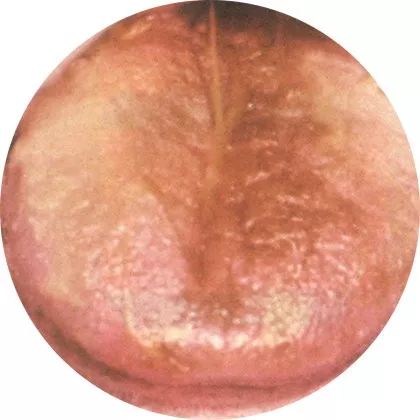 Once the tongue coating turns gray, it indicates that the disease has taken root in the body, and the condition has become serious.
Once the tongue coating turns gray, it indicates that the disease has taken root in the body, and the condition has become serious. Gray-white coating indicates cold dampness or turbidity obstruction; gray-yellow and dry coating indicates internal heat, damaging body fluids. 4. Black coating – Intensified pathogenic heat
Gray-white coating indicates cold dampness or turbidity obstruction; gray-yellow and dry coating indicates internal heat, damaging body fluids. 4. Black coating – Intensified pathogenic heat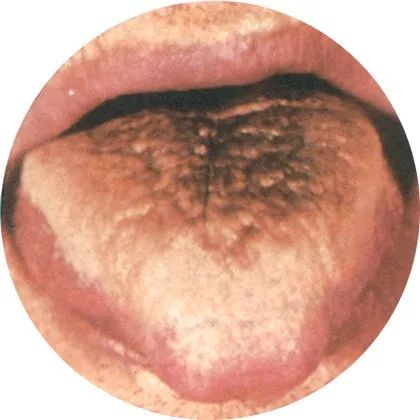 Black dry coating indicates the influence of chronic diseases or inflammation; black greasy coating indicates excessive accumulation of heat and dampness in the body.
Black dry coating indicates the influence of chronic diseases or inflammation; black greasy coating indicates excessive accumulation of heat and dampness in the body. Black coating indicates a serious condition or a trend towards chronicity.
Black coating indicates a serious condition or a trend towards chronicity.
Typical Tongue Patterns for Qi Deficiency Constitution
1. Pale and plump tongue with stasis spots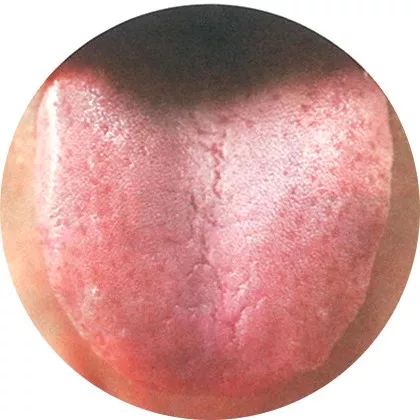 Tongue quality: dull and plump; tongue coating: thin; tongue surface: obvious stasis spots on the front half.
Tongue quality: dull and plump; tongue coating: thin; tongue surface: obvious stasis spots on the front half. This tongue pattern is often seen in patients with fatigue, easy fatigue, cold intolerance, and abdominal distension due to weak digestion and lack of appetite. 2. Dull tongue with thin greasy coating
This tongue pattern is often seen in patients with fatigue, easy fatigue, cold intolerance, and abdominal distension due to weak digestion and lack of appetite. 2. Dull tongue with thin greasy coating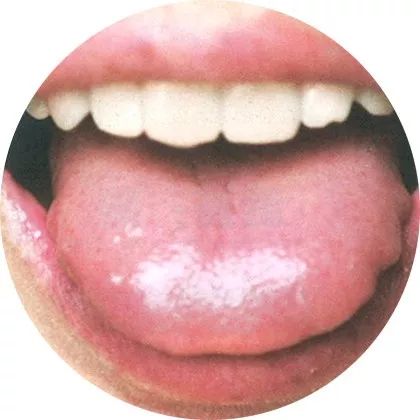 Tongue color: dark red; tongue coating: thin greasy; tongue surface: moist.
Tongue color: dark red; tongue coating: thin greasy; tongue surface: moist. This tongue pattern is often seen in patients with deficiency of righteous qi, poor digestion, and symptoms such as fatigue, memory loss, and abnormal bowel movements. 3. Plump tender tongue, mirror-like
This tongue pattern is often seen in patients with deficiency of righteous qi, poor digestion, and symptoms such as fatigue, memory loss, and abnormal bowel movements. 3. Plump tender tongue, mirror-like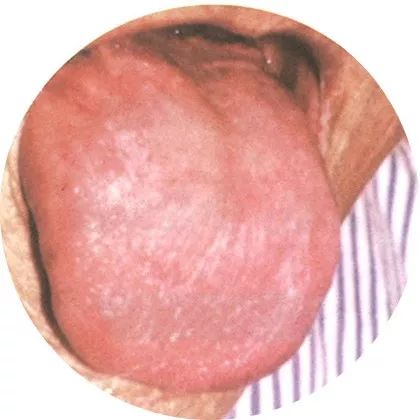 Tongue color: slightly red; tongue quality: tender; tongue body: plump.
Tongue color: slightly red; tongue quality: tender; tongue body: plump. This tongue pattern is typical of both qi and yin deficiency, and patients may experience fatigue, shortness of breath, mental fatigue, and poor digestion. 4. Pale and dull tongue with stasis spots
This tongue pattern is typical of both qi and yin deficiency, and patients may experience fatigue, shortness of breath, mental fatigue, and poor digestion. 4. Pale and dull tongue with stasis spots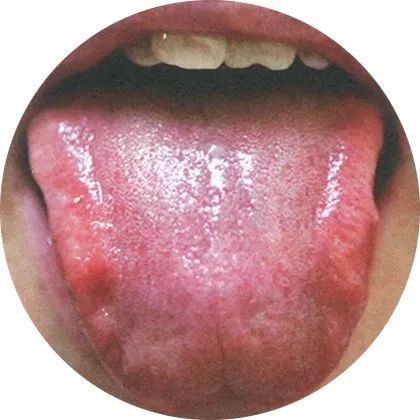 Tongue quality: dull; tongue coating: few and thin white; tongue body: red tip with slight stasis spots.
Tongue quality: dull; tongue coating: few and thin white; tongue body: red tip with slight stasis spots. This tongue pattern is often seen in patients with complex conditions, often due to long-term deficiency of both qi and blood. 5. Pale and plump tongue with white coating
This tongue pattern is often seen in patients with complex conditions, often due to long-term deficiency of both qi and blood. 5. Pale and plump tongue with white coating Tongue body: pale and large; tongue quality: tender; tongue coating: white.
Tongue body: pale and large; tongue quality: tender; tongue coating: white. This tongue pattern is often seen in individuals who are overworked, under stress, or have poor spleen and stomach function. 6. Thin red tongue with stasis spots
This tongue pattern is often seen in individuals who are overworked, under stress, or have poor spleen and stomach function. 6. Thin red tongue with stasis spots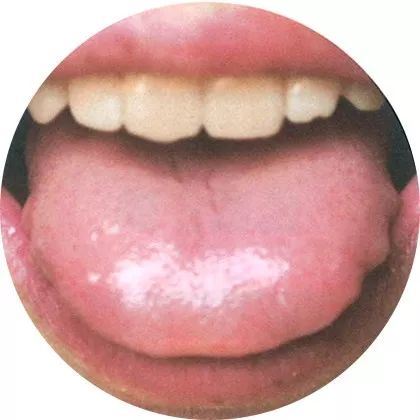 Tongue quality: thin red; tongue body: slightly plump; tongue tip: scattered stasis spots.
Tongue quality: thin red; tongue body: slightly plump; tongue tip: scattered stasis spots. This tongue pattern is often seen in chronic consumptive diseases, resulting from long-term deficiency of righteous qi and blood stasis. 7. Pale red tongue with thin white coating
This tongue pattern is often seen in chronic consumptive diseases, resulting from long-term deficiency of righteous qi and blood stasis. 7. Pale red tongue with thin white coating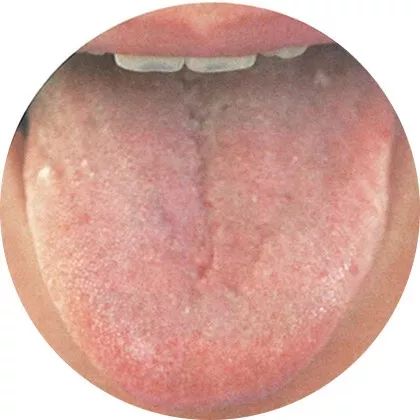 Tongue body: with cracks; tongue quality: pale red; tongue coating: slightly thick white greasy.
Tongue body: with cracks; tongue quality: pale red; tongue coating: slightly thick white greasy. This tongue pattern indicates deficiency of both liver and kidney yin, often accompanied by symptoms such as forgetfulness, dizziness, tinnitus, flank pain, and weakness in the lower back and knees. 8. Dark red tongue with yellow greasy coating
This tongue pattern indicates deficiency of both liver and kidney yin, often accompanied by symptoms such as forgetfulness, dizziness, tinnitus, flank pain, and weakness in the lower back and knees. 8. Dark red tongue with yellow greasy coating Tongue quality: dark red; tongue coating: yellow, thick greasy; tongue body: plump.
Tongue quality: dark red; tongue coating: yellow, thick greasy; tongue body: plump. This tongue pattern indicates excessive heat in the liver and stomach, often accompanied by symptoms such as red cheeks, thin body, tidal fever, night sweats, and insomnia. 9. Cracked tongue with yellow greasy coating
This tongue pattern indicates excessive heat in the liver and stomach, often accompanied by symptoms such as red cheeks, thin body, tidal fever, night sweats, and insomnia. 9. Cracked tongue with yellow greasy coating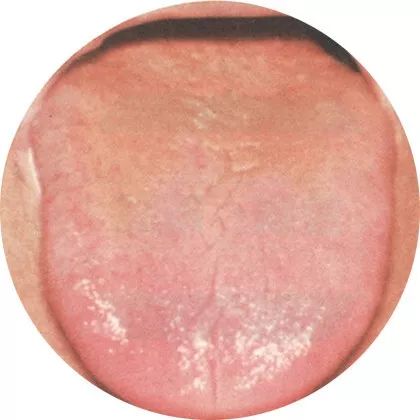 Tongue coating: few or none; tongue quality: red; tongue surface: with small cracks.
Tongue coating: few or none; tongue quality: red; tongue surface: with small cracks. This tongue pattern indicates internal heat and phlegm accumulation, often accompanied by symptoms such as abdominal distension, poor digestion, and dry mouth. 10. Dark red tongue with yellow greasy coating
This tongue pattern indicates internal heat and phlegm accumulation, often accompanied by symptoms such as abdominal distension, poor digestion, and dry mouth. 10. Dark red tongue with yellow greasy coating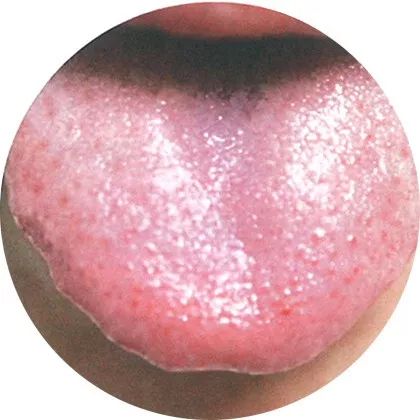 Tongue coating: thin, yellow greasy; tongue quality: dark red; tongue body: normal.
Tongue coating: thin, yellow greasy; tongue quality: dark red; tongue body: normal. This tongue pattern indicates internal heat and dampness, often accompanied by symptoms such as abdominal distension, poor appetite, and fatigue.
This tongue pattern indicates internal heat and dampness, often accompanied by symptoms such as abdominal distension, poor appetite, and fatigue.
Typical Tongue Patterns for Phlegm-Damp Constitution
1. Dark red tongue with yellow greasy coating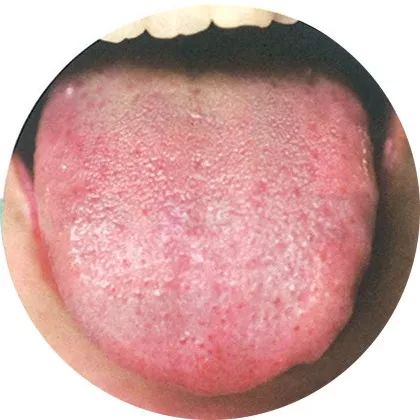 Tongue quality: dark red; tongue coating: yellow, thick greasy; tongue surface: slightly bruised.
Tongue quality: dark red; tongue coating: yellow, thick greasy; tongue surface: slightly bruised. This tongue pattern is often seen in patients with pain, stiffness, numbness in certain areas, dizziness, and memory loss. 2. Dark red tongue with thin greasy coating
This tongue pattern is often seen in patients with pain, stiffness, numbness in certain areas, dizziness, and memory loss. 2. Dark red tongue with thin greasy coating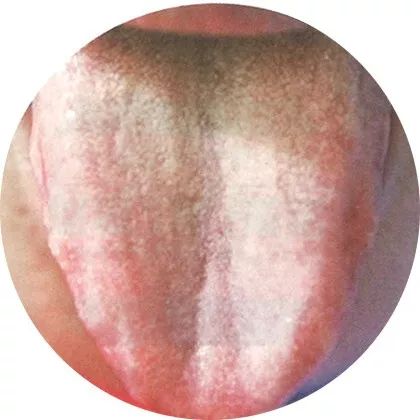 Tongue quality: slightly dark; tongue coating: thin greasy, slightly yellow; tongue color: dark red.
Tongue quality: slightly dark; tongue coating: thin greasy, slightly yellow; tongue color: dark red. This tongue pattern indicates cold dampness obstructing the meridians, often accompanied by symptoms such as cold limbs, chest tightness, and abdominal discomfort. 3. Dark red tongue with thick greasy coating
This tongue pattern indicates cold dampness obstructing the meridians, often accompanied by symptoms such as cold limbs, chest tightness, and abdominal discomfort. 3. Dark red tongue with thick greasy coating Tongue coating: yellow, thick greasy; tongue quality: dark red.
Tongue coating: yellow, thick greasy; tongue quality: dark red. This tongue pattern indicates excessive dampness and phlegm accumulation, often accompanied by symptoms such as chest tightness, abdominal fullness, and fatigue. 4. Cracked tongue with thin greasy coating
This tongue pattern indicates excessive dampness and phlegm accumulation, often accompanied by symptoms such as chest tightness, abdominal fullness, and fatigue. 4. Cracked tongue with thin greasy coating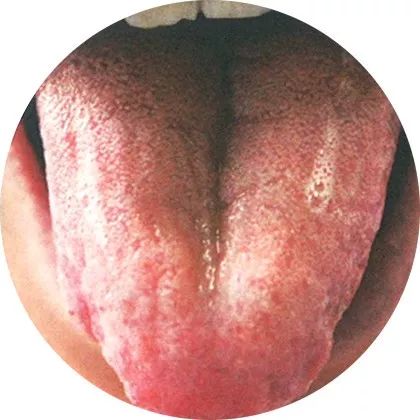 Tongue quality: dark; tongue coating: yellow greasy, thin; tongue surface: with cracks.
Tongue quality: dark; tongue coating: yellow greasy, thin; tongue surface: with cracks. This tongue pattern indicates internal heat and phlegm accumulation, often accompanied by symptoms such as abdominal distension, poor appetite, and fatigue. 5. Dark red tongue with yellow greasy coating
This tongue pattern indicates internal heat and phlegm accumulation, often accompanied by symptoms such as abdominal distension, poor appetite, and fatigue. 5. Dark red tongue with yellow greasy coating Tongue coating: thin, yellow greasy; tongue quality: dark red; tongue body: normal.
Tongue coating: thin, yellow greasy; tongue quality: dark red; tongue body: normal. This tongue pattern indicates internal heat and dampness, often accompanied by symptoms such as abdominal distension, poor appetite, and fatigue.
This tongue pattern indicates internal heat and dampness, often accompanied by symptoms such as abdominal distension, poor appetite, and fatigue.
Typical Tongue Patterns for Blood Stasis Constitution
1. Dark red tongue with stasis spots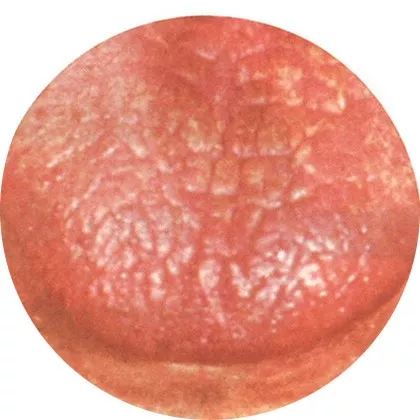 Tongue quality: dark red; tongue coating: yellow greasy; tongue surface: with stasis spots.
Tongue quality: dark red; tongue coating: yellow greasy; tongue surface: with stasis spots. This tongue pattern is often seen in patients with phlegm turbidity obstructing the meridians, leading to blood stasis and long-term damage to body fluids. 2. Purple dark tongue with pale coating
This tongue pattern is often seen in patients with phlegm turbidity obstructing the meridians, leading to blood stasis and long-term damage to body fluids. 2. Purple dark tongue with pale coating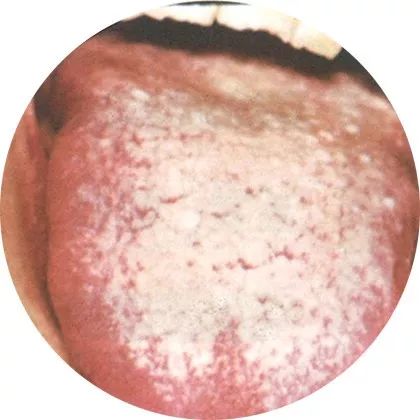 Tongue quality: purple dark; tongue coating: white, pale; tongue surface: with stasis spots.
Tongue quality: purple dark; tongue coating: white, pale; tongue surface: with stasis spots. This tongue pattern indicates internal blood stasis, often accompanied by symptoms such as pain, fatigue, and abdominal distension. 3. Teeth-marked tongue with white greasy coating
This tongue pattern indicates internal blood stasis, often accompanied by symptoms such as pain, fatigue, and abdominal distension. 3. Teeth-marked tongue with white greasy coating Tongue quality: dark red; tongue coating: white greasy; tongue surface: with teeth marks and stasis spots.
Tongue quality: dark red; tongue coating: white greasy; tongue surface: with teeth marks and stasis spots. This tongue pattern indicates internal blood stasis, often accompanied by symptoms such as dark complexion, easy bruising, and fatigue. 4. Blue-purple tongue with stasis spots
This tongue pattern indicates internal blood stasis, often accompanied by symptoms such as dark complexion, easy bruising, and fatigue. 4. Blue-purple tongue with stasis spots Tongue quality: purple dark; tongue coating: thin white; tongue surface: with stasis spots.
Tongue quality: purple dark; tongue coating: thin white; tongue surface: with stasis spots. This tongue pattern indicates internal blood stasis, often accompanied by symptoms such as pain, fatigue, and abdominal distension. 5. Purple dark tongue with stasis spots
This tongue pattern indicates internal blood stasis, often accompanied by symptoms such as pain, fatigue, and abdominal distension. 5. Purple dark tongue with stasis spots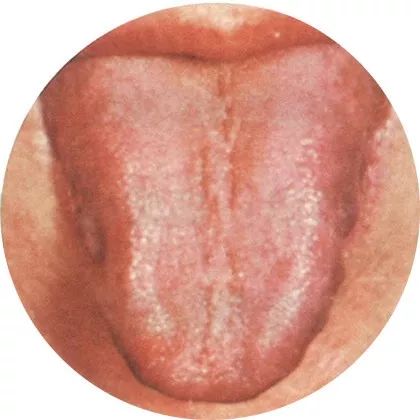 Tongue quality: purple dark; tongue coating: thin white; tongue surface: with stasis spots.
Tongue quality: purple dark; tongue coating: thin white; tongue surface: with stasis spots. This tongue pattern indicates internal blood stasis, often accompanied by symptoms such as pain, fatigue, and abdominal distension.
This tongue pattern indicates internal blood stasis, often accompanied by symptoms such as pain, fatigue, and abdominal distension.
Typical Tongue Patterns for Qi Stagnation Constitution
1. Dark red tongue with yellow greasy coating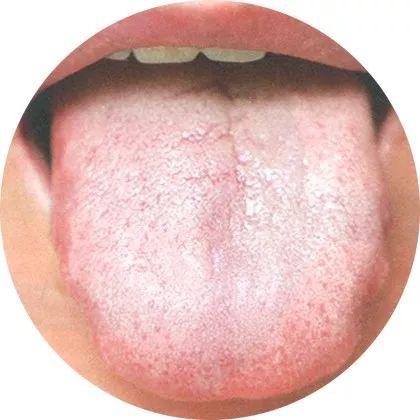 Tongue quality: dark red; tongue coating: thin greasy; tongue surface: with stasis spots.
Tongue quality: dark red; tongue coating: thin greasy; tongue surface: with stasis spots. This tongue pattern is often seen in patients with fatigue, mental fatigue, irritability, and symptoms such as dizziness. 2. Plump tongue with white greasy coating
This tongue pattern is often seen in patients with fatigue, mental fatigue, irritability, and symptoms such as dizziness. 2. Plump tongue with white greasy coating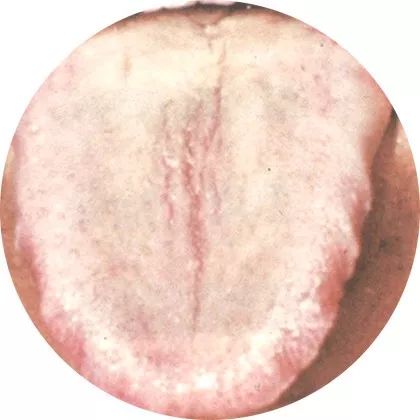 Tongue quality: plump; tongue coating: thick greasy; tongue surface: with cracks.
Tongue quality: plump; tongue coating: thick greasy; tongue surface: with cracks. This tongue pattern indicates internal heat and phlegm accumulation, often accompanied by symptoms such as abdominal distension, poor appetite, and fatigue. 3. Dark red tongue with yellow greasy coating
This tongue pattern indicates internal heat and phlegm accumulation, often accompanied by symptoms such as abdominal distension, poor appetite, and fatigue. 3. Dark red tongue with yellow greasy coating Tongue coating: thin, yellow greasy; tongue quality: dark red; tongue body: normal.
Tongue coating: thin, yellow greasy; tongue quality: dark red; tongue body: normal. This tongue pattern indicates internal heat and dampness, often accompanied by symptoms such as abdominal distension, poor appetite, and fatigue.
This tongue pattern indicates internal heat and dampness, often accompanied by symptoms such as abdominal distension, poor appetite, and fatigue.
Conclusion
For further learning, the paid course content includes:
Tongue diagnosis, facial diagnosis, hand diagnosis
Moxibustion, Tui Na, dietary therapy
Point selection, twelve meridians
Nine types of constitution differentiation and conditioning
Common gynecological diseases such as:
Pelvic inflammatory disease, cold uterus, mastitis, uterine fibroids,
Children’s tongue diagnosis and detailed conditioning methods, etc.
One-time payment provides you with five years of courses, with 52 weeks each year, two classes per week.
Each class lasts 30 minutes and can be replayed.
Long press to recognize the QR code below to add the teacher’s WeChat for more details.


